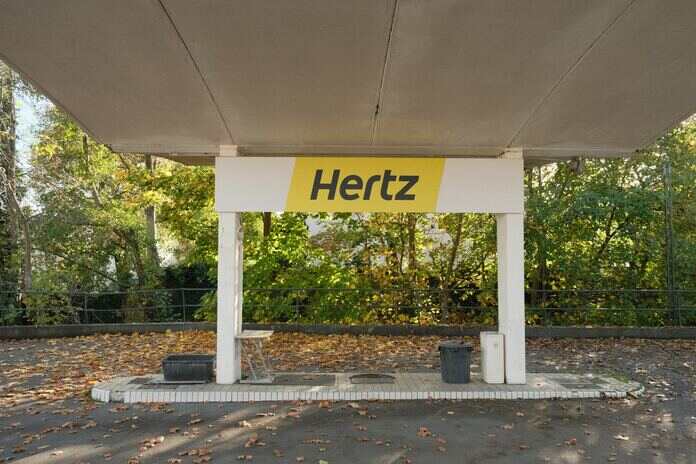Amidst the turbulence of the COVID-19 pandemic, Hertz (NASDAQ:HTZ) found itself an unexpected symbol of economic upheaval, filing for Chapter 11 bankruptcy and sending shockwaves through the car rental sector. However, in a surprising twist of fate, Hertz’s resurgence from bankruptcy came to represent resilience in a changing landscape. This revival not only marked a business comeback but also underscored its ability to ride the wave of “revenge travel.”
Initially, as the SARS-CoV-2 virus dominated headlines, the idea of travel seemed distant and fraught with health concerns. But as fears subsided, a pent-up desire for travel was unleashed. Borders gradually reopened, leading to a resurgence in the once-shuttered travel industry, with HTZ stock reaping the benefits.
Yet, this narrative isn’t without its shadows. While health concerns began to fade into the background, a new worry emerged: the specter of rising inflation. Fueled by measures to counteract the pandemic’s economic fallout, inflation climbed upward.
Even in the face of some consumers tightening their belts, the travel sector has remained robust this year. However, investors are confronted with a pressing question: can the allure of revenge travel provide sustained support for HTZ stock? It’s a quandary that demands careful consideration.
Looking beyond the broader context of Hertz’s position in the industry, specific market dynamics come into play, particularly in the realm of stock options.
Unusual Options Volume Appears to Favor Hertz Stock
As of the September 22nd session, Barchart’s screener flagged HTZ stock for unusual options volume, presenting intriguing metrics. Total volume reached 27,158 contracts, a stark contrast to the open interest of 154,489. What’s particularly noteworthy is that this volume represented a staggering 608.72% surge compared to the trailing one-month average.
Breaking down the transactions, call volume dominated at 16,006 contracts, surpassing the put volume of 11,152 contracts. This resulted in a put/call ratio of 0.7, a typically bullish signal. However, it’s crucial to recognize that interpreting overall sentiment from these numbers alone can be challenging due to the complexities of the options market.
Further insights come from Fintel’s options flow screener, highlighting substantial block trades, often driven by institutional players. One standout transaction involved 601 contracts of the Dec. 15 ’23 12.50 Call, with a substantial premium of $100,082. Considering HTZ stock’s closing price at $13.48 in the open market, this strike price of $12.50 suggests an expectation of upward movement, at least from the perspective of this specific trader.
Technically speaking, in-the-money (ITM) options, especially those significantly deep ITM, command substantial premiums. Therefore, for this particular option to be profitable, a robust upward swing in HTZ stock is necessary.
However, it’s crucial to contextualize this optimism. Over the past month, HTZ stock experienced nearly a 22% dip. While some traders are positioning for potential downturns, the overall sentiment for the September 22nd session is positive.
Significant Risks Loom for Hertz Stock
The appeal of HTZ stock as a bullish proposition is undeniable. Nevertheless, those venturing into this territory must exercise a judicious blend of optimism and caution. One crucial analytical tool in this context is the implied volatility (IV) curve associated with HTZ options.
IV serves as a predictive barometer, offering insights into potential price fluctuations of an underlying asset. Think of it as a weather forecast for stock prices, hinting at possible storms or calm conditions. However, like weather predictions, IV doesn’t provide absolute certainty. While it indicates increased activity around specific price points, it doesn’t confirm whether such activity will materialize or in which direction it might sway.
Analyzing the form of the IV curve reveals a noticeable leftward skew for HTZ stock options. In simpler terms, as strike prices decrease, IV increases more steeply than it would if strike prices were rising. This pronounced leftward tilt signifies traders preparing for possible downturns.
The rationale behind this defensive stance isn’t unfounded. Given the fragility of the consumer economy, a cautious approach to HTZ is not just prudent but perhaps necessary. At the heart of this complex narrative lies the juxtaposition of the revenge travel sentiment against the backdrop of looming macroeconomic challenges.
To distill this into actionable insights: HTZ could indeed present a viable bullish opportunity, as indicated by sentiments from experienced market participants. However, these bullish proponents may also be safeguarding themselves against potential downside risks. Retail investors navigating these uncertain waters would do well to exercise similar multifaceted prudence.
Featured Image: Unsplash @ Luca Merz















